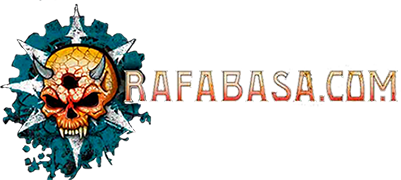Bikike
0 Publicaciones
0 COMENTARIOS
Spotting trends before they become mainstream is a valuable skill, whether you're a business owner, an investor, a marketer, or even someone looking to stay ahead of the curve in your personal life. Predicting trends can give you a competitive advantage, enabling you to make informed decisions, capitalize on emerging opportunities, and avoid risks. However, spotting trends early requires a combination of observation, research, and intuition. Here’s how you can start identifying trends before they hit the mainstream.
Times Decoded
1. Monitor Early Adopters
One of the most reliable indicators of a trend is the behavior of early adopters—individuals or groups that embrace new products, technologies, or ideas before they gain widespread popularity. These people are often influencers, thought leaders, or members of niche communities who have a keen sense of what’s about to break into the mainstream. By paying attention to what early adopters are talking about, using, or endorsing, you can get a glimpse into future trends.
To identify these early adopters, look for them in niche online forums, social media platforms, or specialized blogs. Websites like Reddit, Twitter, and TikTok can be excellent resources to spot emerging trends in real time, as they often host discussions about new products, ideas, and cultural shifts before they become widely known.
2. Study Social Media and Online Communities
The internet has made it easier than ever to spot trends early, thanks to the rapid dissemination of information on social media and online communities. Platforms like Instagram, Twitter, and Pinterest can be valuable tools for detecting the first stirrings of a trend. Pay attention to hashtags, keywords, and viral posts related to topics that are gaining momentum.
Additionally, monitoring industry-specific forums, such as Reddit’s specialized subreddits, can help you track niche trends that might eventually spill over into the broader market. Being proactive in engaging with online communities allows you to tap into emerging ideas before they reach mass audiences.
3. Analyze Data and Consumer Behavior
One of the most effective ways to spot trends early is by analyzing data. Trends are often reflected in consumer behavior, and large datasets can reveal subtle shifts before they become obvious. For instance, e-commerce platforms and search engines like Google provide insight into what consumers are searching for, buying, or researching. By tracking changes in search volumes or analyzing purchase trends, you can identify potential trends.
Another method is using data analytics tools like Google Trends or social media monitoring platforms that track keyword usage, search volumes, or hashtag popularity. By looking at what people are searching for, you can spot patterns that suggest an emerging trend.
4. Keep an Eye on Innovation and Technology
Technological advancements often serve as the foundation for new trends. Innovations in fields like artificial intelligence, renewable energy, virtual reality, and biotechnology can lead to groundbreaking changes in industries and society. By staying updated on the latest technological developments, you can often predict which industries are about to experience significant transformations.
Tech conferences, patent filings, startup funding rounds, and university research can all provide valuable insights into the next wave of innovation. Understanding how technology is evolving can help you identify which trends are likely to take hold in the near future.
5. Follow Cultural and Societal Shifts
Trends don’t just emerge from products or technologies; they often stem from broader societal and cultural shifts. Changes in values, attitudes, and behaviors can signal the emergence of a new trend. For example, the growing focus on sustainability and ethical consumption has led to trends like plant-based diets, zero-waste lifestyles, and eco-friendly fashion.
To spot cultural shifts, keep an eye on what people are talking about in media, politics, and entertainment. Documentaries, books, movies, and news stories can all offer insight into emerging social movements and ideologies. Understanding the pulse of society and what people are advocating for can help you spot trends before they become mainstream.
6. Identify Influential People and Organizations
Certain individuals and organizations have the power to influence large groups of people and drive trends. By paying attention to what thought leaders, celebrities, and industry experts are saying or doing, you can get a sense of what’s on the horizon. Many trends are launched or popularized by key influencers who have significant followings, whether on social media or through their work in their respective fields.
Following influential figures in your industry, whether through social media or through interviews, can help you stay ahead of emerging trends. Similarly, monitoring the moves of top companies, investors, and startups can give you insight into what the future might hold.
7. Trust Your Instincts and Be Open to New Ideas
While data and research are essential, sometimes spotting trends before they happen requires intuition. If something feels new, exciting, or different, it might be worth investigating further. The key is to remain open to change and new ideas. Sometimes the next big thing is hiding in plain sight, but it takes a shift in perspective to recognize it.
By cultivating a curiosity for new things and being willing to explore unfamiliar areas, you put yourself in a better position to spot trends before they fully emerge.
Conclusion
Spotting trends before they happen is not about having a crystal ball—it’s about observing patterns, gathering data, and staying connected to the pulse of innovation and culture. By monitoring early adopters, analyzing consumer behavior, staying informed about technology, and keeping an eye on societal shifts, you can position yourself to spot emerging trends and capitalize on them. Ultimately, being proactive, open-minded, and attentive to the world around you will give you the edge in identifying the next big thing.

















